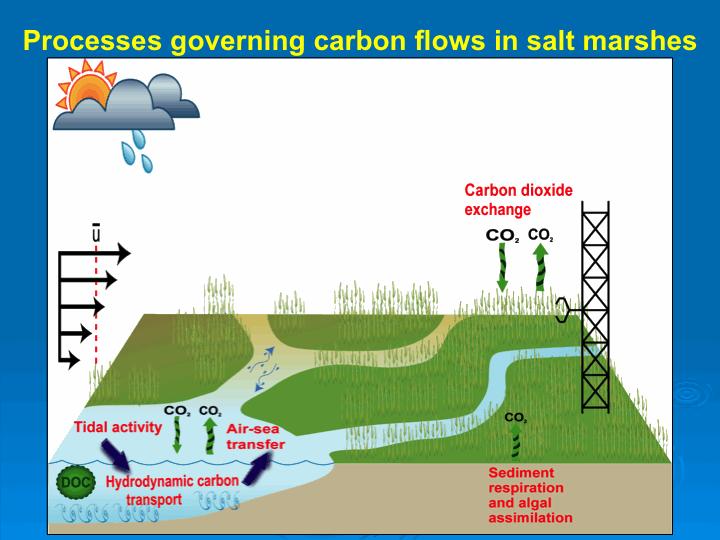
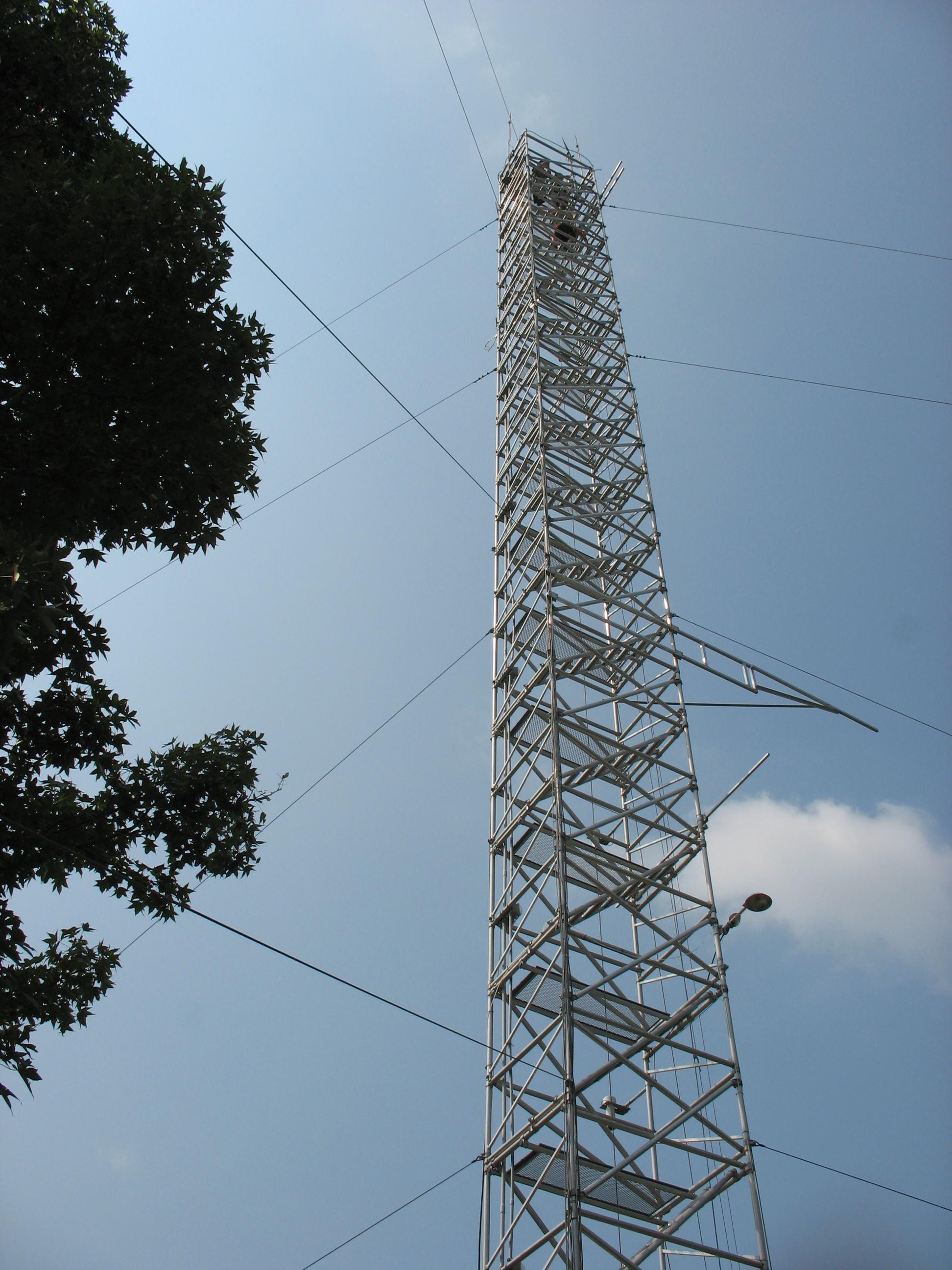
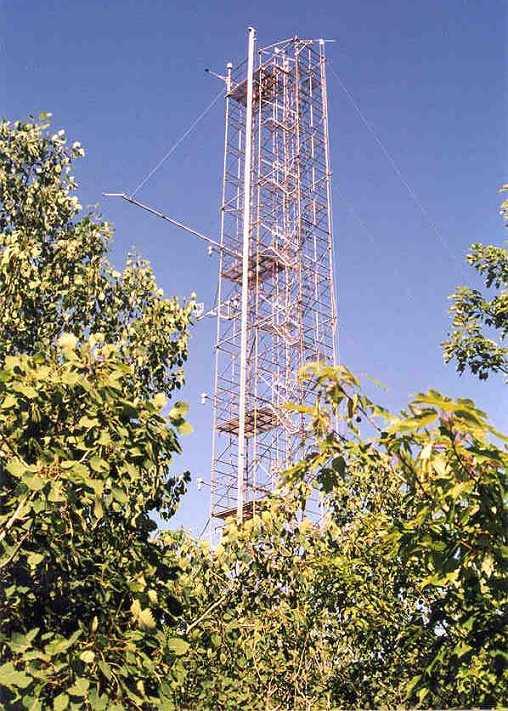
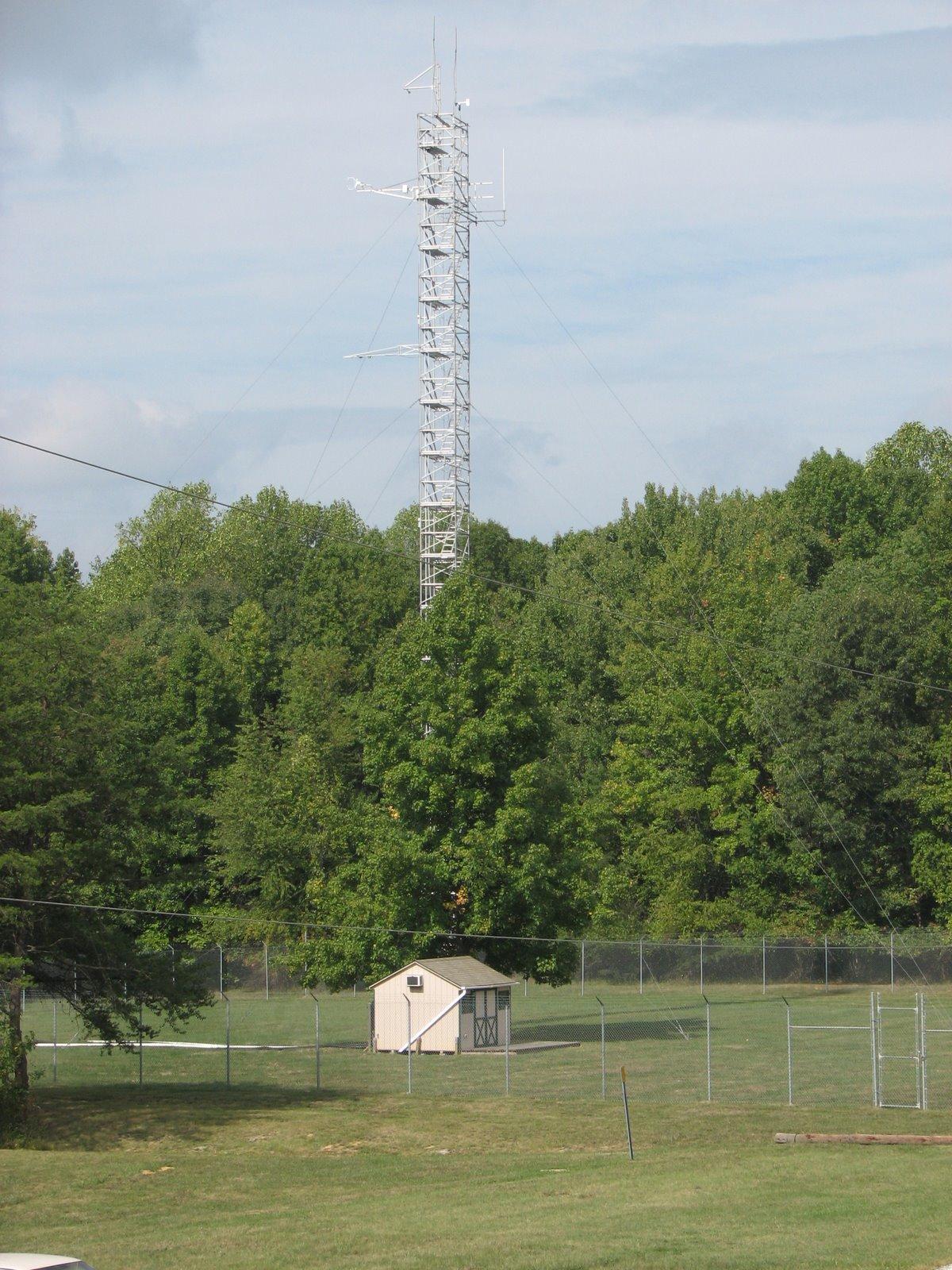
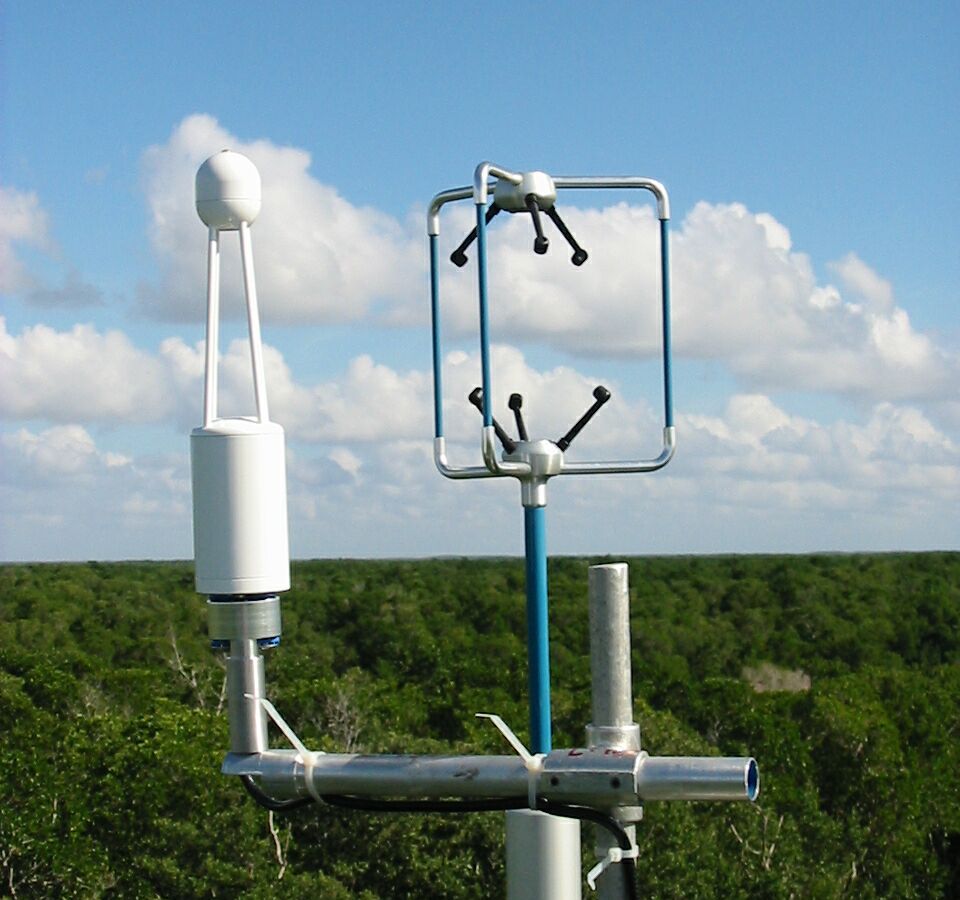
Carbon sequestration
Since 1995, working with Environment Canada and AmeriFlux colleagues we have pursued research concerning long-term carbon dioxide cycling in forested and coastal environments. Our flux tower in the Everglades is part of the AmeriFlux network. Our approach is to investigate the edaphic, physiological and atmospheric controls on carbon cycling in forest and coastal ecosystems. The results of field investigations are integrated in numerical modeling systems to infer the forest carbon sequestration capability in response to local and regional environmental change. To date, our research has shown that temperate forest ecosystems in southern Canada effectively sequester atmospheric carbon dioxide at rates ranging from 100 to 400 gC per m2 per year. Everglades mangroves can “sequester” about 1000 gC per m2 per year (this large value results because of the low rates of local carbon respiration). Climate perturbations such as severe drought and features such as early spring thawing and length of growing season are key controls on the amount of carbon forests can consume. Quality of solar irradiance, namely levels of diffuse irradiance, reaching the forest canopy is another variable controlling the magnitude of carbon assimilation by vegetation. Our current carbon cycle research is carried at several locales in North America, including mixed deciduous forests in the Beltsville and Borden, the Florida Everglades mangrove forests, and the salt marshes in the eastern shore of Virginia.
Since 1995, working with Environment Canada and AmeriFlux colleagues we have pursued research concerning long-term carbon dioxide cycling in forested and coastal environments. Our flux tower in the Everglades is part of the AmeriFlux network. Our approach is to investigate the edaphic, physiological and atmospheric controls on carbon cycling in forest and coastal ecosystems. The results of field investigations are integrated in numerical modeling systems to infer the forest carbon sequestration capability in response to local and regional environmental change. To date, our research has shown that temperate forest ecosystems in southern Canada effectively sequester atmospheric carbon dioxide at rates ranging from 100 to 400 gC per m2 per year. Everglades mangroves can “sequester” about 1000 gC per m2 per year (this large value results because of the low rates of local carbon respiration). Climate perturbations such as severe drought and features such as early spring thawing and length of growing season are key controls on the amount of carbon forests can consume. Quality of solar irradiance, namely levels of diffuse irradiance, reaching the forest canopy is another variable controlling the magnitude of carbon assimilation by vegetation. Our current carbon cycle research is carried at several locales in North America, including mixed deciduous forests in the Beltsville and Borden, the Florida Everglades mangrove forests, and the salt marshes in the eastern shore of Virginia.
